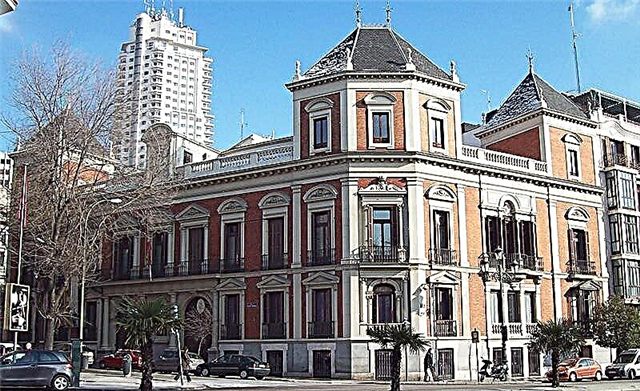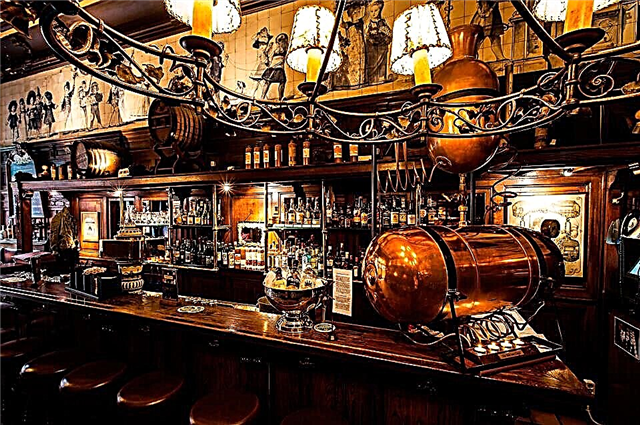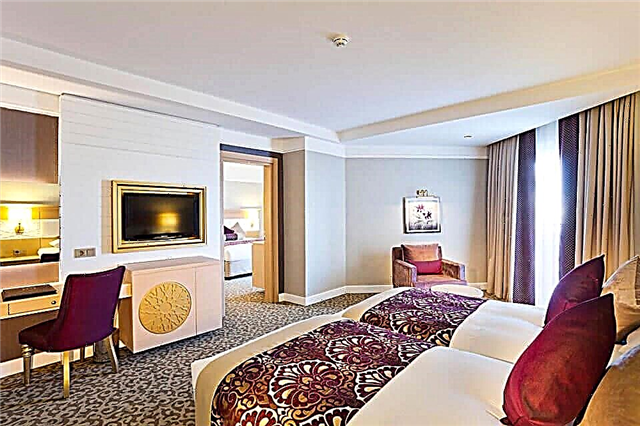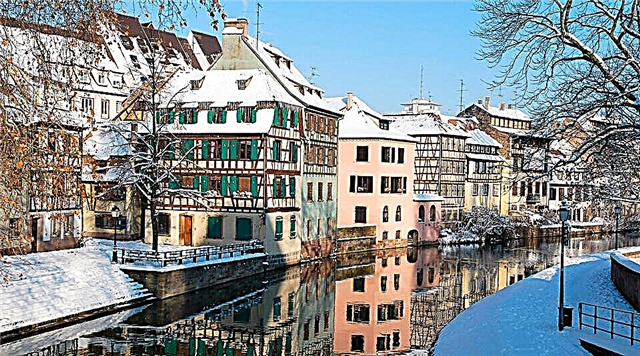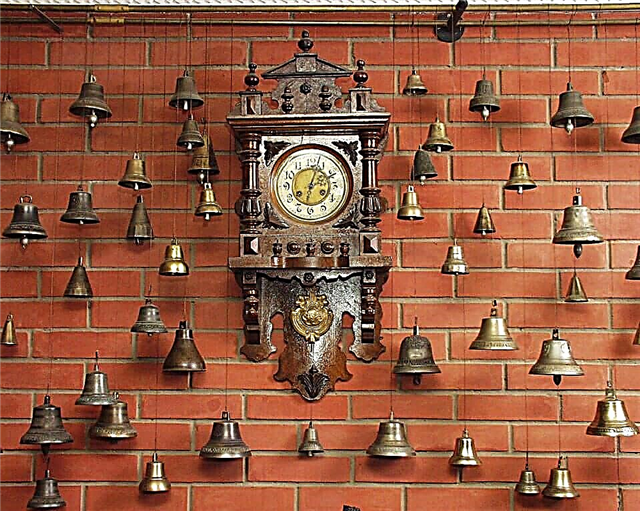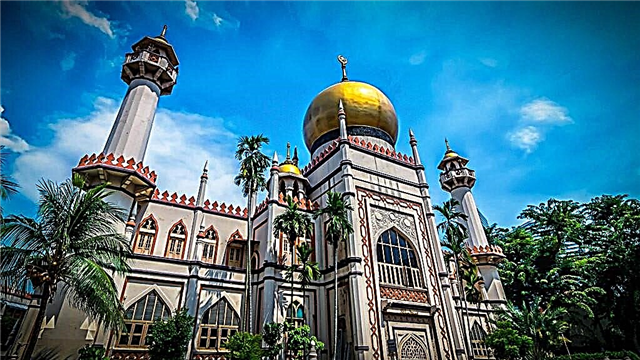Singapore will not surprise tourists with medieval castles or ancient ruins of ancient buildings. This island state, located within the city of the same name, is relatively young, although the first information about Singapore dates back to the 3rd century. Since 1965, Singapore has been developing as an independent country.
Occupying a limited territory and not having its own resources, Singapore has managed to make a leap in its development from the level of a developing country to a prosperous highly developed state. The greatness of this country is symbolically reflected in the name and comes from the Malay word combination "singa", which translates as "lion", and Sanskrit "pura", which means "city".
Let's find out what sights Singapore surprises tourists with. The peculiarities of the geographical position of Singapore and the high level of urbanization affect the limited nature of tourism facilities in this area. However, Singapore more than compensates for their lack with a series of amazing parks, botanical gardens, an oceanarium, a well-equipped zoo and a kind of night safari.
Siloso beach

Considering the fact that Singapore is located at a distance of about 200 km from the equator, you should pay attention to the city's beaches. The best of them is Siloso, which attracts tourists not only for its cleanliness, palm trees and white sand. It is interesting that nearby the beach is the southernmost point of Eurasia, the Piai metro station, which can be reached on foot. When evening falls, visitors to Siloso take their time to leave the beach. This is because every time with the onset of dusk, the Wings of Time laser show begins. On a huge screen made of water and light, a laser performance is played, accompanied by high-quality sound and telling about the travel of two friends in time across countries and continents.
Oceanarium

In Singapore, marine life is given close attention. In order to study the underwater world in 2012, the world's largest oceanarium was opened on Sentosa Island, which collected about 800 species of marine fauna. The Oceanarium is equipped in such a way that visitors watching sharks, turtles, eels, stingrays, jellyfish, crabs and other inhabitants of the deep sea have the effect of being in their natural environment. The darkness and wrecks of sunken ships, between which representatives of the underwater world slowly sail, enhance the illusion of being in the waters of the ocean.
Mandai Zoo

One of the attractions of Singapore is the Mandai Zoo, opened in 1973. 316 species of animals settled here, among which 16% are on the verge of extinction and are listed in the International Red Book. This zoo has earned a reputation as the best in the world. Animals are not locked in cramped cages, but freely roam the territory assigned to them. It seems incredible, but at the Singapore Zoo, even predators feel at ease and do without cages.
In order not to endanger visitors, predatory animals were fenced off with deep ditches filled with water, and herbivores are behind a low fence. The zoo recently celebrated its fortieth anniversary. Despite its quite considerable age, its territory and equipment look modern and dignified. From time to time, the zoo hosts a variety of activities that are popular with children and adults.
Botanical Garden

The pride of Singapore is the Botanical Garden, founded in 1859 and occupying a huge area. Now we can already talk about a whole family of such gardens, formed within the framework of the Singapore Botanic Garden. In the Orchid Garden, for example, you can enjoy the scent of these flowering plants, as well as visit the Development Garden and Red Garden, visit the Garden for Children and the Rain Forest. Among all the splendor of tropical vegetation is Swan Lake, in which the swans brought to the Singapore Botanical Garden from the Netherlands have perfectly settled down.
In addition to swans, turtles and fish are quite good here. By the lake you can see various sculptures lurking among the trees and meet monitor lizards and monkeys, which also settled in the garden. The main thing is that you can admire the splendor of the tropics for free, and visitors can walk along the well-groomed paths of the garden from 5 am to midnight every day. In addition, it is not allowed to ride in the garden, not only by cars, but also by bicycles. Therefore, walks in the Singapore Botanical Garden will be not only educational, but also quite safe.
Marina Bay Gardens

The tropical climate makes it possible to create new islands of wildlife on the territory of the millionth Singapore. So in 2012, an amazing garden was formed near Marina Bay, in which steel 50-meter structures and living plants were combined to form giant iron trees entwined with vines and orchids. Among the giant trees, there is a lake, which dragonflies have chosen. There are a lot of them here. A real paradise for entomologists. At night, hundreds of multi-colored lamps are lit on the iron trees, and the nightly light show that takes place in this garden will not leave anyone indifferent.
The garden has two huge greenhouses. In one of them, conditions have been created for the high mountain regions of the planet with appropriate vegetation, and in the other, desert conditions. Here you can see a lot of different flowers growing in the desert and many types of baobabs.
Jurong Bird Park

Jurong Bird Park was founded in 1971. More than five thousand birds of various species have settled on its territory. All birds live in spacious open-air cages, and a beautiful lake is equipped for waterfowl. Penguins are the special pride of the Bird Park. For these birds, conditions have been created here in which penguins live in their homeland in Antarctica. Therefore, the inhabitants of the most severe continent of the planet - the emperor penguins feel great in tropical Singapore.
Temple of the Tooth of Buddha

Usually sacred Buddhist temples have a long history. But the Temple of the Tooth Relic was built in 2007 and, like in any modern building, they also use technological advances. The four-story building is equipped with an elevator that takes you to the roof of the building, where the world's largest prayer wheel is located. Rotating it, they repeat certain mantras several times. In addition to the prayer wheel, there is a blooming garden on the roof of the Temple of the Tooth Relic. There is also a Buddhist monastery built in 1920 and consisting of prayer halls and various towers. On the territory of this monastery there is a dovecote and its own crematorium. The monastery is decorated with a huge bronze statue of Buddha.
Sultan Hussein Mosque

Despite the tiny size for the state, traditional Buddhist temples and mosques coexist in Singapore. The Sultan's Mosque is a decoration and landmark of the city. The mosque owes its name to Sultan Hussein, by whose order its construction began in 1824. A hundred years after the start of construction, the mosque was rebuilt, significantly increasing its size and somewhat changing the traditional architecture of the building.
In addition to the mosque, the Hindu Temple of Sri Mariamman, built in 1827, operates in Singapore. This temple is traditionally consecrated every 12 years. And on the territory of the temple, a fire ceremony takes place, which is arranged before the Festival of Lights.
Peranakan Museum

For modern people, there is nothing surprising about mixed marriages, but in Singapore they look at it differently.It is believed that from marriages between Malay women and Chinese men, people with a new nationality are born - the Peranakans. Surprisingly, Singapore even has the Peranakan Museum, where you can get acquainted with the life and culture of this new nation, which arose about 600 years ago as a result of mixed marriages.
In addition to peculiar cultural traditions, the Peranakans also developed a language inherent in them, combining Chinese and Malay words. This confusion of languages in the common people is called baba-malay or baba-nenya. Nevertheless, the newly formed nation is characterized by its unique cuisine, wedding ceremonies, way of life and culture. In the Peranakan Museum you can get acquainted with the traditions of the Peranakans, their national dress, household items and living conditions.
National Museum

The oldest attraction in Singapore is the National Museum, founded in 1849. In 1992, this museum was awarded the honorary status of a National Monument of Singapore. The main expositions of the museum allow you to get an idea of the life of the local population and the main historical events of Singapore. The main exhibit of the National Museum is the ancient Singapore stone. According to scientists, its age is about 11 centuries. Of particular interest to visitors is the ancient inscription, engraved on the stone, which no one has yet been able to decipher.
By visiting this museum, you can get acquainted with interesting and even curious historical events. For example, that during the Second World War the Japanese invaded Singapore on ... bicycles.
Park Ho Par Villa or Tiger Balsam Garden

Anyone interested in Chinese mythology will be interested in visiting Ho Par Villa Park, founded in 1937 by the brothers Ho and Par, who once created Tiger Balm. Therefore, the park is also called "Tiger Balsam Gardens". However, there is no famous balm in the park. But there are thousands of different sculptures showing scenes from Chinese myths and ancient legends. Many of the sculptures are rather strange, but they probably contain some kind of deep Eastern wisdom that is difficult for a European to decipher. But the meaning of the "Ten Circles of Hell" gallery is quite understandable. Here the eerie situation in hell is clearly demonstrated, and Buddhist sinners can see what sophisticated punishments await them there.
Museum of optical illusions

Another remarkable attraction of the city is the Museum of Optical Illusions. It is also called the Museum of Optical Illusion. Unlike usual museums, here you can not only touch the exhibits and look at the paintings, but also become the heroes of different plots captured in these paintings.
Singapore Science Center

At the Singapore Science Center, opened in 1977, curious visitors can get up close and personal with scientific advances. With the help of experiments, children and adults will see and learn exactly how a lightning flash occurs, where and why tsunamis occur, what forces form a tornado and why an echo sounds. In this museum, it is allowed to touch the exhibits and take part in some experiments. In the cinema, located in one of the pavilions, using a huge spherical screen, you can create the illusion of the audience's presence during the demonstration of popular science films.
Observation Decks

One of the interesting sights of Singapore is the Tiger Sky observation tower with a height of 109 meters. The tower is equipped with a special cabin, which, together with tourists, rises, rotating and providing an opportunity to view the whole of Singapore from a bird's eye view. You can also view the city from above using the world's largest Ferris wheel. The Singapore Flyer is 164 meters high.
Located on Marina Bay, the Ferris Wheel offers breathtaking views of the city's skyline. In addition, a flight simulator is located in the Singapore Ferris wheel. Anyone can feel like a Boeing 737 captain and experience the thrill of flying the plane in real flight. The flight simulator is used by pilots, amateurs and even children. There are different program settings for different categories of those wishing to test themselves as the captain of an aircraft.
Marina Bay Sands Resort

The most important and distinctive landmark of Singapore can be safely called the Marina Bay Sands resort complex, which includes three 55-storey skyscrapers connected by a bridge located on the roofs of these buildings. Within the bridge, at a height of 191 meters, there is a huge pool, gardens and individual trees, restaurants and an observation deck. The bridge itself in its shape resembles a modern cruise ship, plowing the heavens of Singapore.

